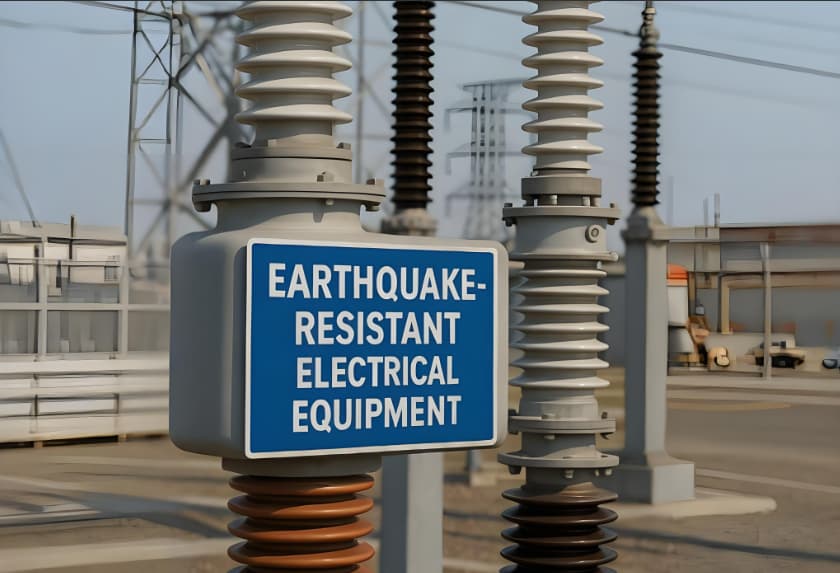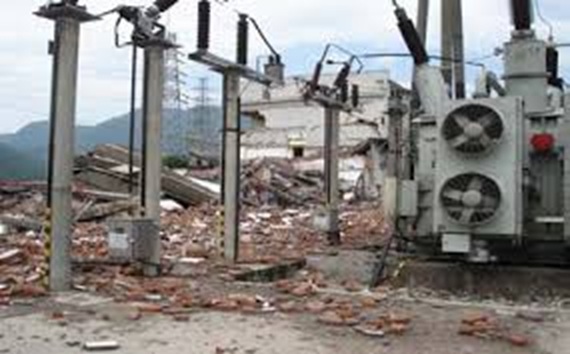Advanced Technology and Practice Enhancing Seismic Resilience of Electrical Equipment in Critical Infrastructure
1. Introduction
Critical infrastructure facilities, including power stations, hospitals, telecommunications centres, and water supply systems, form the backbone of modern society. These facilities must remain operational even in the face of natural disasters like earthquakes. Ensuring the survivability of electrical equipment in such events is crucial. Damages to electrical equipment, the nervous system of these facilities, can lead to cascading failures, crippling essential services and jeopardising public safety.
2. The Importance of Resilient Electrical Equipment
The earthquakes or seismic shocks can subject electrical equipment to intense forces, including:
- Ground motion: This causes vibration and shaking, which can lead to equipment instability, damage to connections, and internal component failure.
- Inertia: Equipment tends to resist changes in motion, resulting in stress on mounting structures and connections.
- Impact: Colliding objects or falling debris can cause direct damage to equipment enclosures and internal components.
3. Essential Equipment for Minimum Operational Continuity
In the event of an earthquake, it's crucial to maintain the operation of specific electrical equipment to ensure the continued functioning of critical infrastructure. This includes:
- Emergency power systems: Backup diesel generators require seismic anchoring and fuel redundancy. The uninterruptible power supplies (UPS) are essential for providing power when the main grid fails.
- Essential lighting: Emergency lighting systems guide people to safety and facilitate rescue operations.
- Critical control systems: Systems that monitor and control essential functions, such as power distribution, water flow, and communication networks.
- Fire suppression systems: Electrical components that power and control fire alarms, sprinklers, and other fire safety equipment.
- Communication equipment: Devices that maintain communication between different departments and with the outside world.

4. Design Considerations and Practical Rules
Electrical equipment should be categorised based on its importance and the consequences of its failure. Critical equipment, which must remain operational during and after an earthquake, requires the highest level of seismic protection. Designing earthquake-resistant electrical equipment requires a comprehensive approach that considers various factors:
4.1 Seismic Zones and Ground Motion
The first step is to determine the seismic zone of the facility's location. This information, typically obtained from seismic maps and building codes, indicates the expected level of ground motion. Ground motion is characterised by:
- Peak Ground Acceleration (PGA): The maximum acceleration of the ground during an earthquake.
- Response spectra: A plot showing how a structure responds to different frequencies of ground motion.
4.2 Structural Design
- Reinforced Structures: Buildings and structures housing electrical equipment must be designed to withstand seismic forces. This involves using reinforced concrete, steel frames, and other earthquake-resistant construction techniques.
- Base Isolation: This technique involves separating the structure from the ground using flexible bearings or isolators. These devices absorb seismic energy, reducing the forces transmitted to the building and its contents. The decouples equipment from ground motion using lead-rubber bearings or friction pendulums (e.g., reduces horizontal acceleration by 50–70%).
- Damping Systems: Dampers are devices that dissipate energy, reducing the amplitude of vibrations. Viscous dampers could dissipate 30–40% of seismic energy. They can be installed in structures or within equipment to minimise shaking.

4.3 Equipment Hardening Design
- Robust Enclosures: Electrical equipment should be housed in sturdy enclosures made of steel or other durable materials. Enclosures should be designed to resist deformation and protect internal components from damage.
- Secure Mounting: Equipment must be securely mounted to the floor, walls, or ceiling using appropriately sized bolts, brackets, and supports. The mounting system should be designed to withstand the forces imposed by an earthquake.
- Flexible Connections: Electrical cables and conduits should have sufficient flexibility to accommodate movement between equipment and structures. This prevents stress on connections and reduces the risk of breakage.
- Component Selection: Internal components, such as circuit breakers, transformers, and capacitors, should be selected for their ability to withstand vibration and shock.
- Vibration Isolation: Sensitive equipment can be mounted on vibration isolators, which are devices that reduce the transmission of vibrations.
4.4 System Design
- Redundancy: Critical systems should have redundant components or backup systems to ensure continued operation in case of failure.
- Diversity: Utilise diverse power sources, communication paths, and control systems to minimise the impact of single-point failures.
- Separation: Equipment should be physically separated to prevent cascading failures. For example, emergency power systems should be located in a different area from the main power supply.
- Grounding: Proper grounding is essential to prevent electrical faults and ensure the safety of personnel and equipment.
5. Relevant Regulations and Standards
Several international and national standards and regulations provide guidance on designing and testing earthquake-resistant electrical equipment. These include:
- IEC 60068-2-6: This International Electrotechnical Commission (IEC) standard specifies test methods for determining the resistance of equipment to vibration.
- IEC 60068-2-27: This IEC standard specifies test methods for determining the resistance of equipment to shock.
- IEEE 693: This Institute of Electrical and Electronics Engineers (IEEE) standard provides recommended practices for seismic design of substations.
- ASCE 7-22: Minimum seismic loads for structures (PGA and spectral acceleration).
- RCC-E: It constitutes a series of stipulations for the electrical and I&C systems and equipment of a pressurized water electro-nuclear reactor that shall be drawn up by a Client in order to guarantee safety
- IBC (International Building Code): This code provides requirements for the design and construction of buildings and structures, including those housing electrical equipment.
Along with international standards, many countries have their own national building codes that specify seismic design requirements. The established standards and codes delineate comprehensive specifications concerning several critical areas. Firstly, they outline the methodologies for seismic testing, which involve replicating earthquake conditions within a controlled laboratory environment. Secondly, they set forth performance criteria that define the acceptable thresholds for the functionality of equipment both during and following seismic events. These standards also stipulate the necessary documentation protocols that must be adhered to for the design, testing, and installation processes of equipment engineered to withstand earthquakes.

6. Installation and Commissioning Practices
The proper installation and commissioning of electrical equipment are essential for ensuring optimal performance during seismic events. A number of critical factors must be taken into account to achieve this goal. First and foremost, it is imperative that qualified personnel carry out the installation and commissioning processes. These individuals should possess the necessary training and experience, particularly in seismic design principles and applicable standards. Additionally, strict adherence to the manufacturer's guidelines is vital; this includes careful attention to specific mounting requirements and torque specifications to ensure the equipment is securely and correctly installed.
Furthermore, thorough inspection and testing of the installation are necessary to confirm that the equipment is properly mounted and connected, as well as to validate that it operates effectively and meets established performance criteria. Lastly, maintaining comprehensive documentation throughout the installation and commissioning phases is crucial. This documentation should encompass detailed records such as drawings, test reports, and certifications, which serve as a valuable reference for future maintenance and compliance verification.
7. Responsibilities in EPC Projects
In EPC projects, the responsibility for ensuring the survivability of electrical equipment during earthquakes is shared among several stakeholders:
Clear communication and coordination among these stakeholders are essential for ensuring the successful implementation of earthquake-resistant electrical systems. The EPC contract should clearly define the responsibilities of each party and specify the requirements for seismic design, testing, and certification.
8. Conclusion
Protecting critical infrastructure from the devastating effects of earthquakes requires a concerted effort to design, install, and maintain earthquake-resistant electrical systems. By adhering to established standards, employing advanced technologies, and clearly defining the responsibilities of stakeholders, it is possible to significantly reduce the vulnerability of electrical equipment and ensure the continued operation of essential services during and after seismic events. The ongoing development of new materials, sensors, and control systems promises to further enhance the resilience of electrical infrastructure in the face of these natural disasters.

Back to the list





